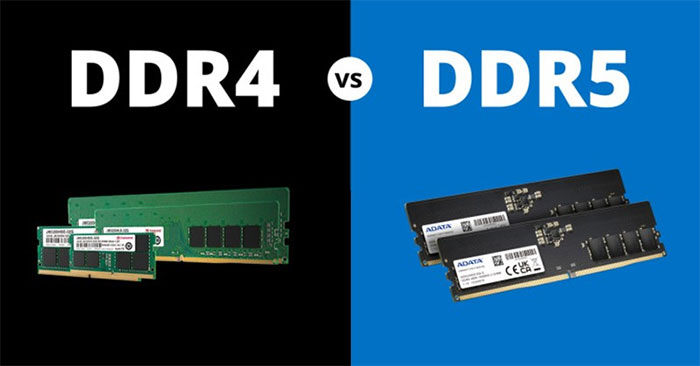What is the difference between Nvidia's RTX and GTX GPUs
What is the difference between these two lines of graphics cards? Let's find out right here.
What does GTX mean?
The first GTX-branded graphics cards were released by NVIDIA in 2005, and they immediately became popular year after year. However, it wasn't until 2008 that NVIDIA fully embraced the GTX brand when it launched the GTX 200 series. GTX stands for 'Giga Texel Shader eXtreme.'
The term 'texel' (or 'texture pixel') refers to the basic unit of texture maps, with textures in the game consisting of arrays of texel. All in all, this is basically just a naming scheme, not really referring to any specific technical elements, so for years NVIDIA simply explained that it was a 'brand'. high-end graphics card'.
NVIDIA has been using GTX alongside GT, which is the trademark for their lower-end graphics cards, for several years. Up to now, the GTX product line has experienced a brilliantly successful development that spans more than a decade. NVIDIA has largely stopped using the GTX branding for its high-end cards since 2018, although they still release certain models in a limited way, such as the NVIDIA GTX 1630 due out in 2022.
What does RTX mean?
RTX is NVIDIA's current brand of mid-range and high-end gaming graphics cards, which has been around since 2018. RTX means 'Ray Tracing Texel eXtreme', and the key difference from the mainstream GTX cards is the feature 'ray tracing' - ray tracing.
Ray tracing is a technique that tracks the path of light rays as they bounce around a virtual scene, interact with objects, and bounce off or pass through them. It basically mimics how light works in real life to create more realistic and accurate images.
Ray tracing since launch has dramatically improved the look and feel of games, and supporting real-time ray tracing in games is a huge breakthrough — enough for NVIDIA to rebrand with confidence. GPUs have made their own success in the past. RTX graphics card models have dedicated RT cores or hardware accelerators dedicated to efficient compute ray tracing operations.
Choose GTX or RTX card
GTX is almost a 'retired' brand at this point. Meanwhile, NVIDIA has oriented its implementation of RTX technology to both high-end, mid-range, and entry-level GPUs — just look at models like the RTX 3050 to see that. As such, if you're planning to play games and want to buy a new GPU, there's no reason you should consider GTX cards at all.
However, if you're buying a GPU and you're not really thinking about gaming, then the GTX GPU can still be argued. For the average user, you can buy a GTX 1630 or GT 1030 to provide cheap, basic graphics capabilities for a basic learning or office PC rig.
If you want to play some simple games, you can check out the GTX 1650 and GTX 1660, as they are GPUs without ray tracing but still good enough to handle basic, non-graphical games.
You should read it
- Disable the NVIDIA component to speed up the computer
- How to fix the NVIDIA graphics card error is not displayed in Device Manager
- GPU-Z v2.12.0 is equipped with the ability to detect fake NVIDIA video cards
- The real difference between SD Card and SSD card
- Best graphics card (GPU) 2020
- How to optimize the NVIDIA Video Card to play the best game
- List of the best graphics cards according to the price segment
- Instructions for creating Business Card in Photoshop
- How to Install a Graphic Card's Driver Without Original Disk
- Which graphics card is good for gaming laptops
- How to renew an ATM card when the ATM card expires
- Difference between Nvidia GeForce RTX 3060 and 3060 Ti
May be interested

Is DDR4 or DDR5 RAM better for you?

5 best single-board x86 computers in 2023

The 12th and 13th generation Core CPUs were so good that AMD almost lost the PC market to Intel

Top most powerful Dimensity chips in 2023

AMD Ryzen 7 7800X3D Official Benchmark Results Available: 24% Better Gaming Than Intel 13900K At $449

Why do some modern computers still have Serial ports?






 Difference between desktop GPU and laptop GPU
Difference between desktop GPU and laptop GPU What is GPU? Difference between GPU and CPU
What is GPU? Difference between GPU and CPU What is the difference between Hex, RGB and HSL?
What is the difference between Hex, RGB and HSL? What is the difference between GUI and CLI?
What is the difference between GUI and CLI? Difference between Nvidia GeForce RTX 3060 and 3060 Ti
Difference between Nvidia GeForce RTX 3060 and 3060 Ti Nvidia is developing a line of AI GPUs with 144GB HBM3E memory
Nvidia is developing a line of AI GPUs with 144GB HBM3E memory